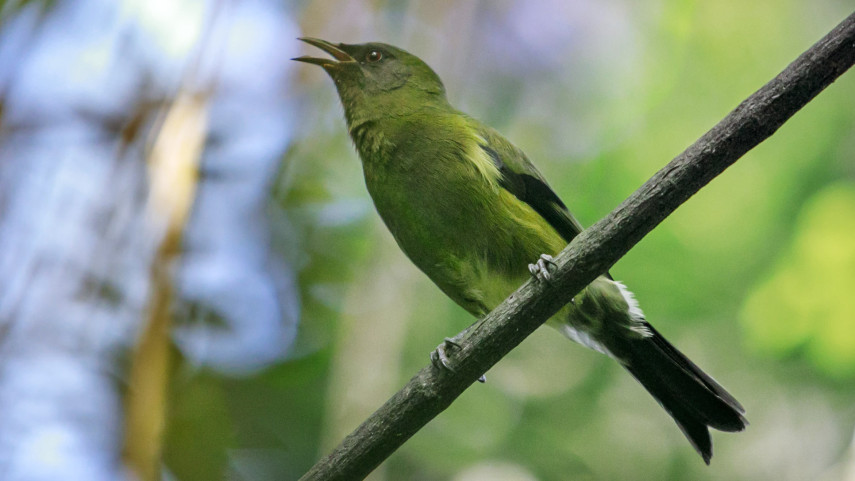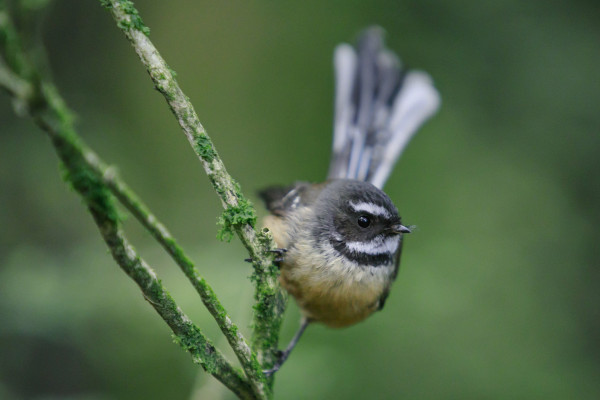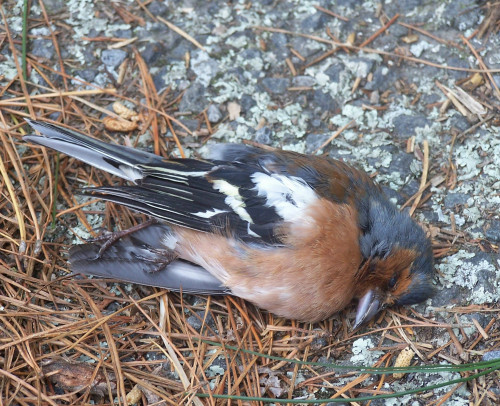
Birds arrive to winter-over in city

Share this story
People who live or work in Christchurch city may be noticing an increase in bird life as the temperatures fall.
It’s a normal occurrence in Ōtautahi at this time of year as birds leave areas of remnant forest on the Port Hills where they breed over the spring and summer months, says Andrew Crossland, Christchurch City Council Ecologist.
“Autumn sees a boost in bird numbers because all the young have fledged which seasonally doubles populations. Then as the weather cools, we have this annual influx of birds, both native and introduced, arriving to over-winter in the city.

Birds like fantails move down from the hills, and from the countryside to the west of the city in an an altitudinal migration. They can be spotted in places like Riccarton Bush.
“They disperse into domestic gardens and parks and reserves including Riccarton Bush, the Botanic Gardens, Bottle Lake Forest and wooded riparian zones along city waterways.”
The movement of birds down from the hills, and from the countryside to the west of the city is known as an altitudinal migration.
“To birds, the city and surrounds represent the largest and most diverse expanse of woodland habitat on the Canterbury Plains, with a wide range of winter food resources," says Mr Crossland.
The “at risk” New Zealand pipit can be seen over autumn-winter around Christchurch Airport and McLeans Island Grasslands Reserve.
“Also, the city has a heat island, making it appreciably warmer than bush patches high up on the Port Hills or inland – especially on winter nights. In a prolonged winter blizzard with sub-zero temperatures for several days, more than half of native fantails and grey warblers on the Port Hills can die, whereas survival chances in the city’s woodlands, parks and gardens are much higher.”
How you can help
- People can encourage native bird species in their gardens over autumn/winter by planting trees and shrubs, particularly where they are positioned adjacent to neighbour’s trees over the back fence, thereby forming a “habitat patch.”
- All native trees and a small range of exotic trees are of value to native birds.
- Highly valuable winter food trees are ones that provide insect food resources for birds, particularly kanuka, manuka, koromiko, kaikomako, totara and matai.
Bellbirds, fantails, grey warblers, and finches are among those species that can be spotted in greater numbers over the cooler months. The “at risk” New Zealand pipit also appears in autumn-winter, but as a grassland bird is restricted to patches of suitable short grassland habitats, especially around Christchurch Airport and McLeans Island Grasslands Reserve.
Along with the seasonal influx, studies show an increased abundance of bellbird populations in forest remnants on the Port Hills since 2006.
“This is likely due to predator control work on the Port Hills but changing habitat and food availability could also be a factor. It's why we’ve seen bellbirds returning to the city landscape, after being largely absent for many decades prior.
“In the future, as the last 20 years of habitat restoration and predator control efforts on the Port Hills by the community and Council Regional Parks Team comes to fruition and the connectivity of bush remnants improves, it is hoped to reintroduce several locally extinct bush birds. These include three endemic South Island species - the brown creeper, South Island rifleman and South Island fernbird.”

This chaffiich did not survive the freezing temperatures of winter.
